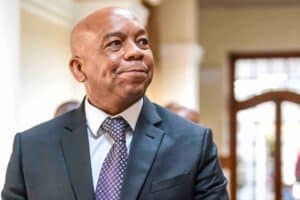Dispels fears of 30% once-off increase.

Eskom would be satisfied with an additional 2% tariff increase every year for the next five years to compensate it for the R66 billion it is claiming for unforeseen expenses and unrealised revenue for the three years ended March 31, 2017.
This position, expressed at an information sharing session hosted at the utility’s Megawatt Park headquarters in Johannesburg, dispels fears of a once-off 30% tariff increase, should the National Energy Regulator of South Africa (Nersa) grant Eskom the full amount.
It will, however, be in addition to the tariffs determined in the next multi-year tariff determination process (MYPD4), which Eskom is expected to submit in the second half of this year and the application of a further interim increase relating to under-recovery and over-expenditure in 2017/18 that it will submit in July. In this 2017/18 application, Eskom is expected to apply for about R20 billion to be clawed back.
Nersa will start on April 16 with public hearings about Eskom’s application for the additional R66 billion. The first hearing will be in Cape Town and after similar hearings in every province, the last hearing will take place in Gauteng on May 11.
Nersa will announce its decision on June 21 and has told Moneyweb that the earliest date any tariff increase could be implemented would be April 1, 2019 for Eskom’s direct clients and July 1, 2019 for municipalities. The regulator is allowed to liquidate the amount it grants Eskom over several years.
Eskom general manager for regulation, Hasha Tlhotlhalemaje explained to journalists that the application is done in terms of the Regulatory Clearing Account (RCA), which allows for cost recovery and revenue adjustments based on actual past variances.
It is a risk management tool designed to mitigate against the fact that tariff determinations are made on the basis of assumptions that may or may not play out as expected.
Of the R66 billion Eskom applies for, R44 billion is the result of lower than anticipated sales volumes, Tlhotlhalemaje said.
The balance consists of R7.4 billion relating to Independent Power Producers (IPPs), R9.2 billion for international purchases, R3.3 billion in favour of consumers related to the environmental levy, R3.5 billion related to coal cost and R1.4 billion related to increased use of open-cycle gas turbines (OCGT) during the period, when the risk of load shedding was present.
Eskom is not allowed to recover over-expenditure on operating cost through the RCA mechanism.
Tlhotlhalemaje said Eskom aligned its RCA applications with Nersa’s decision with regard to the RCA determination for 2013/14. Nersa then disallowed large amounts for extensive OCGT use and only allowed the equivalent cost, should Eskom have used coal generation instead. It rejected Eskom’s argument that the expense was prudent because it assisted in averting load shedding, which is much more costly for the economy.
Nersa argued that Eskom’s coal generation fleet should have been available as a cheaper option than OCGTs, but its performance deteriorated due to Eskom’s lack of maintenance.
Tlhotlhalemaje responded to earlier criticism by Nersa that its projection of sales volumes was inaccurate, resulting in huge RCA claims.
She pointed out that the initial projections were made in 2011 when Eskom was preparing its tariff application for the previous tariff period (MYPD3). She said even before Nersa took its decision to grant Eskom an 8% annual tariff increase for the five years instead of the 16% Eskom applied for, Eskom notified the regulator in February 2013 that the latest sales numbers indicate sales for the five-year period would be lower.
Nersa however chose to ignore that and based its tariff determination on the initial, higher sales volume projections.
This resulted in lower tariffs to the public at that stage. Nersa’s decision in fact postponed the pay-date for consumers and Eskom should now recover what consumers should have paid at the time, Tlhotlhalemaje said.
Eskom had to borrow the R66 billion in the meantime. It has to pay interest on the loans that it won’t be able to recover through the RCA process.
Tlhotlhalemaje gave the assurance that Eskom’s claim for lower-than-projected sales volumes does not include sales lost through load shedding. This, she said, is calculated according to the system operator’s daily data on expected and actual sales.
The Energy Intensive User Group of South Africa (EIUG) said in a statement that Nersa should only allow Eskom R40 billion of the R66 billion it has claimed.
The organisation said: “EIUG concedes that the recovery of costs in the RCA applications should be sufficient to maintain Eskom’s liquidity and avoid a default, but no larger, so that it is forced to make a fundamental change in its management and operations”.
Xolani Mbanga, CEO of EIUG, said the MYPD was meant to provide a price-path that would enable customers, investors and other stakeholders to plan with a certain level of certainty with respect to future electricity prices. “However, the divergence between the forecasted sales volumes by Eskom and actual sales, coupled with its inability to maintain and operate the existing generation fleet at optimal levels have resulted in RCA applications that significantly alter the price path predicted by the MYPD3.”
Brought to you by Moneyweb
For more news your way, follow The Citizen on Facebook and Twitter.






